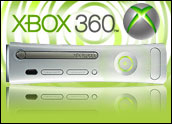
With a host of software and manufacturing partners in tow, Microsoft held its “Get Virtual Now” launch event Monday. It was the official coming-out party for the much talked-about Windows Server 2008 Hyper-V technology, and also served as the occasion for announcing the upcoming availability of System Center Virtual Machine Manager 2008 and Microsoft Hyper-V Server 2008. The just-released Microsoft Application Virtualization 4.5 also shared the spotlight, along with a raft of programs and solutions from Microsoft partners.
“They’ve rolled a whole lot of stuff together,” said Al Gillen, an analyst at Gartner. “If you look between the lines, they released Hyper-V six or eight weeks ago. System Center has been announced I don’t know how many times. And they’re just announcing now that the product would be available in 30 days. In a sense, they’ve rolled together a lot of pieces of news they announced several times before into a composite announcement.”
There is a lot of interdependency between the various software applications Microsoft announced, Gillen told the E-Commerce Times.
“System Center Virtual Machine Manager is useless without Hyper-V. So you do need Hyper-V. You could say that is the foundation product,” he noted, “but they also announced some application virtualization solutions.”
Microsoft Goes Virtual
System Center Virtual Machine Manager 2008 (SCVMM) is one of the key pieces Microsoft was missing in the Hyper-V release, said Gary Chen, principal analyst at McChen Research. Part of the System center suite of products, SCVMM enables businesses to configure and deploy new virtual machines and centrally manage a virtualized infrastructure running on Windows Server 2008 Hyper-V, Microsoft Virtual Server 2005 R2, Microsoft Hyper-V Server 2008 or VMware Virtual Infrastructure 3.
“Having just a hypervisor without advanced management isn’t terribly useful,” Chen told the E-Commerce Times. “SCVMM is a key enabler for businesses with any sort of decent-sized infrastructure. Without it, you can’t really deploy and manage Hyper-V on any real scale effectively.”
The standalone Hyper-V Server 2008 is interesting, but it is not entirely clear how Microsoft intends to position this relative to Windows 2008 Hyper-V — something that can serve to confuse customers on what the actual differences are between the two products, Chen noted.
“The standalone product gives them something more similar to VMware or XenServer, a hypervisor that isn’t tightly attached to an OS. However, their platform compatibility is limited compared to the competition, so they’ll need to improve that if they intend to reach outside of their Windows base. It will also help them get into the embedded hypervisor market,” he continued.
Among the most promising technologies demonstrated was the live migration feature of Windows Server 2008 R2. With the release due in 2010, Microsoft will have a full-bodied offering to compete with market leader VMware, Citrix and other virtualization software makers.
“That’s kind of the next version of Hyper-V,” Gartner’s Gillen said. “That’s not a feature you can get anytime soon. That’s two-plus years away. They just want to get on record that they can do live migrations.”
According to Chen, the demo was “good reassurance” for businesses.
“They also demoed live migration, a big feature that wasn’t in the initial release of Hyper-V,” he pointed out. “This feature isn’t coming until 2009, but it is good reassurance for their customers to know that it is on the horizon, and it is a key building block of more advanced virtualization functions and datacenter automation.”
Hyper-V Server 2008 and System Virtual Machine Manager 2008 will be available in 30 days.
Heavyweight Entering the Market
Microsoft’s push into the virtualization market is part of a US$8 billion investment in software development, said Bob Kelly, corporate vice president, infrastructure server marketing.
“[One] area we are investing in — it’s our fastest growing area both from a revenue standpoint and a profitability standpoint — is the enterprise space. That’s due to the server and business applications,” he said during the virtualization event.
The software maker is training its laser beams on virtualization because it has a lot of ground to make up in order to turn out a product that can go toe-to-toe with VMware’s offerings. Live migration capabilities and virtualization of things other than the system environment — such as the I/O infrastructure and storage — are a few examples, noted Gillen.
“These are things Microsoft hasn’t gotten around to yet,” he said. “Microsoft has been playing catch-up to VMware for some time now. Hyper-V server is a good-appearing product for the services it offers, but its not a complete and does not include every feature that needs to be included in the product.
The other virtualization vendors have had management products and standalone hypervisors for awhile, Chen concurred.
“The live migration feature can’t come soon enough for many people,” he said, “but there are still many gaps in Microsoft’s virtualization story. They haven’t talked about leveraging virtualization for [high availability] or [disaster recovery]. They have non-virtualization products that do that, but things are a lot easier if you take advantage of virtualization. They also haven’t talked much about their security vision or any security products for a virtualized world,” he added.












































Social Media
See all Social Media